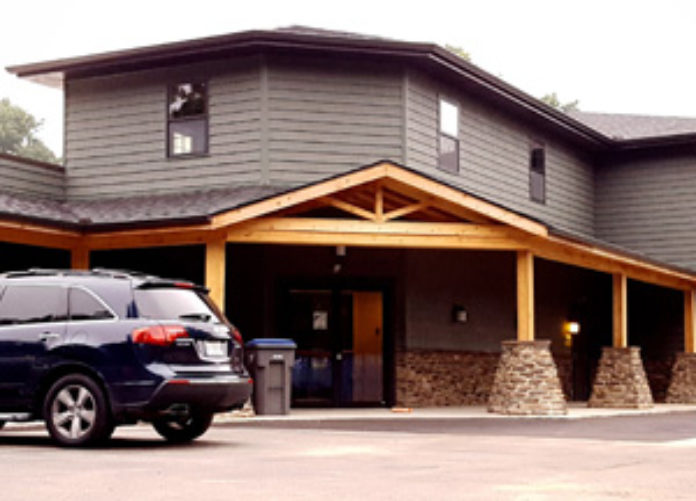The era of secretly housing women in a 100-year-old house that had 13 beds in three bedrooms is about to come to an end.
On Tuesday, representatives of Beaman Home will officially bring the agency out of the shadows when they unveil its new facility at 603 Parker St., Warsaw, that will eventually be able to house up to 38 victims of abuse and their families.
An open house is set for 4 p.m. Tuesday and anyone wanting to participate is asked to meet at the city police station on East Fort Wayne Street so they can be shuttled over to 603 Parker St. where parking is limited.
The facility will feature suite-like rooms for victims and family members, a commercial-grade kitchen, a dining area that can also serve as a multi-purpose room, a courtyard, administrative offices, three living rooms and a level of security that few facilities have.
About 30 cameras will monitor all areas of the campus, and guests enter a fortified vestibule where they are screened before being allowed inside. The main desk is shielded with bullet-proof glass; and if unwanted guests show up, they’ll be told to leave through a speaker system that can be heard outside, Executive Director Tracie Hodson said.
Every window and door is monitored through an alarm system.
“We’re similar to Fort Knox, but not quite,” said Hodson.
Beaman has been working on this project for years and began fundraising more than three years ago.
The finished portion of the building spans 7,000 square feet and another 4,000 square feet on the second floor will be finished –“hopefully” – next year, she said.
Another $160,000 in donations is needed to finish that portion, she said.
Total cost, including the property, is about $1.9 million and funded with grants and donations.
The new facility will address an immediate demand that’s been obvious for years.
In July, the original facility provided housing to 20 women and 15 kids. In 2015, 106 women and children came through residential program and the agency served 97 through outreach.The agency also provided educational services last year to about 2,000, most of whom were students, Hodson.
When space became tight, Hodson said, they made do with “cots, cribs, couches and floors.”
The new facility also will include a set of rooms for male abuse victims and their families. Some of the suites are designed to accommodate people with wheelchairs. Hodson estimated Beaman serves three to five people a year who have mobility issues. “Those people are at high risk of being abused because they can’t run, because maybe they don’t have the cognitive awareness,” Hodson said.
Officials realized early on that the new facility could not be kept a secret since they had to undergo a huge fundraising operation and go through a zoning appeals process. But moreover, going public is consistent with the modern philosophical approach in working with abuse victims. “Back in the ‘80s when we started, being confidential and secret was very much about how to keep them safe because we didn’t have security like we had today. We didn’t have the technology that we do today,” she said.
The subject, she said, also needs to come out of the shadows if they want to reduce the amount of abuse. “The only way to do that is to tackle it head on, and the only way to tackle it head on is to be public and acknowledge what we do,” she said.
More than anything, Beaman wants to end the cycle of violence and has built a continuum of services that works as much with the victims as it does the children of victims who are at high risk for social anxiety and have an increased potential to become abusers or victims.
“Domestic violence is generational. What you learn in your home as a child is what you take with you as an adult,” Hodson said.
“I am hopeful that after 10, 15 years we’ll be able look back and say, ‘Yes, it was the turning point in our community where our (domestic violence) stats started to decrease,’” she said.
Officials hope to begin housing abuse victims at 603 Parker St. by the end of the month, she said.





